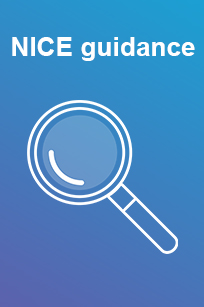Nice update: more people eligible for neuromuscular treatment
 What’s the guidance?
What’s the guidance?
TA588: Nusinersen for treating spinal muscular atrophy
Does it replace earlier guidance?
No. Nusinersen was recommended as an option for treating spinal muscular atrophy (SMA) in 2019 as part of a managed access agreement (MAA). Managed access agreements allow access to a treatment with promising potential, but where further data needs to be collected to address uncertainties raised in the original review. Nice then reviews the new evidence at the end of the MAA period. A variation to the MAA has now been agreed extending the range of people eligible for the treatment.
What does it cover?
Nice committed at the time of the MAA to review emerging new evidence on who should be eligible for treatment. This review involved manufacturer Biogen, patient groups, clinicians, SMA Reach UK and NHS England and NHS Improvement. And it specifically looked at whether people with type III SMA who are unable to walk can benefit from nusinersen and therefore should be included in the MAA.
Who is it for and what does it cover?
5q SMA – the 5q referring to the genetic cause – is a rare, genetic, neuromuscular disease, characterised by spinal motor neuron loss, muscle atrophy and motor impairment. It is debilitating for all patients and fatal for the worst affected. According to a resource impact statement issued alongside the original 2019 recommendation, there are between 600 and 1,200 children and adults currently living with SMA in the UK.
SMA is clinically classified into different types (0-4) based on the age at which symptoms emerge and the impact on muscles. The original MAA specified that access to the treatment would be restricted to types 1, 2 and 3, with a further requirement that type 3 patients should be able to walk independently. However, a variation to the MAA – published in June – has now been agreed extending it to cover treatment for people with type III SMA who are unable to walk.
The variation also allows the removal of the rule that meant patients who had lost the ability to walk needed to regain that ability within 12 months of treatment in order to be eligible for further treatment.
Service capacity to deliver nusinersen to this wider NHS patient cohort is being developed and will expand further as Covid restrictions on social distancing ease. NHS centres will be in touch with patients as this medicine is rolled out further.
What are the benefits?
SMA affects the nerves in the spinal cord controlling movement, causing weakness, progressive loss of movement and difficulty breathing and swallowing. Without nusinersen, the condition is managed through supportive care, which aims to minimise the impact of disability, address complications and improve quality of life. Nusinersen is the first treatment that targets the underlying cause of SMA.
Results from one trial showed that nusinersen improved event-free survival, overall survival and motor functions in patients with type 1 SMA, while a separate trial has shown improved motor function for children with later-onset SMA. However other benefits were uncertain.
What are the financial implications?
When Nice recommends a treatment as an option for use within a managed access agreement, NHS England will make it available according to the conditions in the managed access agreement. The list price of nusinersen is £75,000 per vial with treatment costs per person over five years amounting to around £1.35m. However, the treatment is available to the NHS with discount as part of a commercial arrangement.
Gary Shield is resource impact assessment manager at Nice
Related content
We are excited to bring you a fun packed Eastern Branch Conference in 2025 over three days.
This event is for those that will benefit from an overview of costing in the NHS or those new to costing and will cover why we cost and the processes.